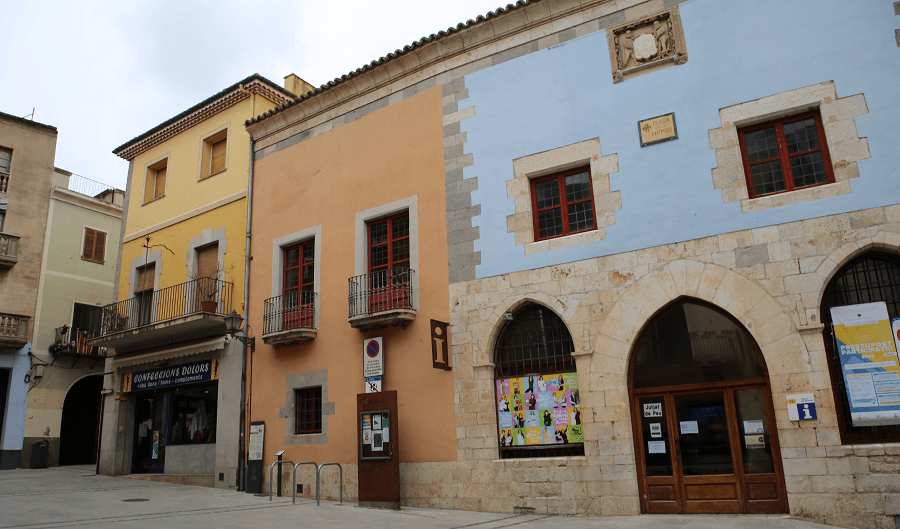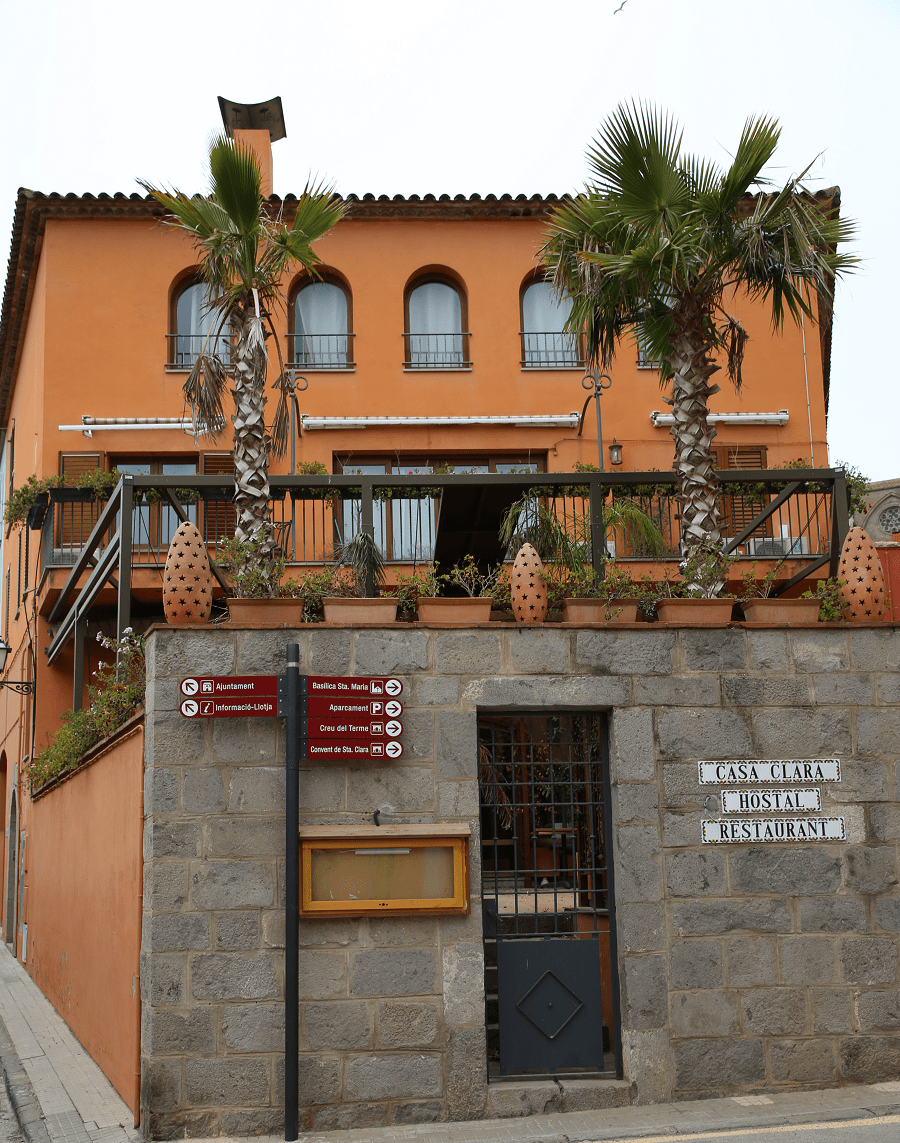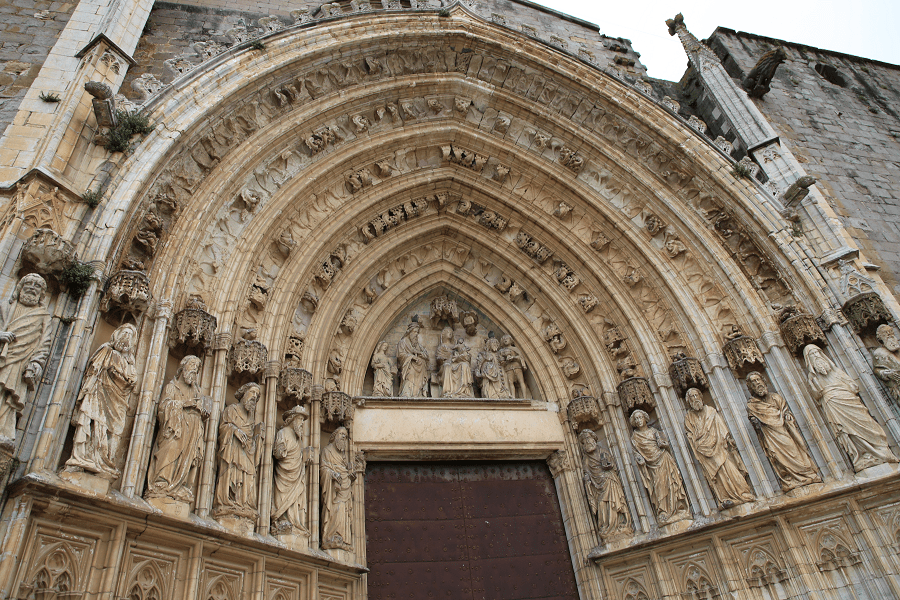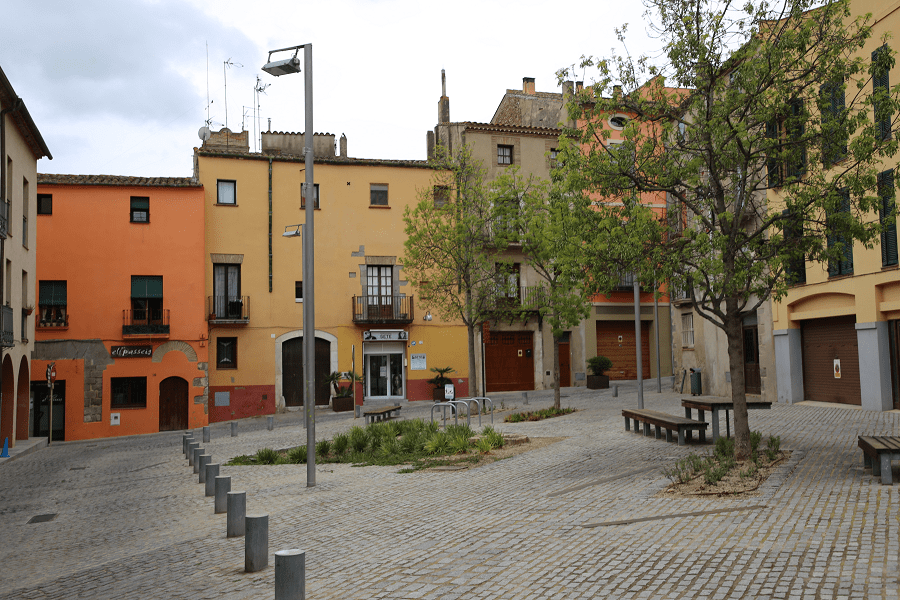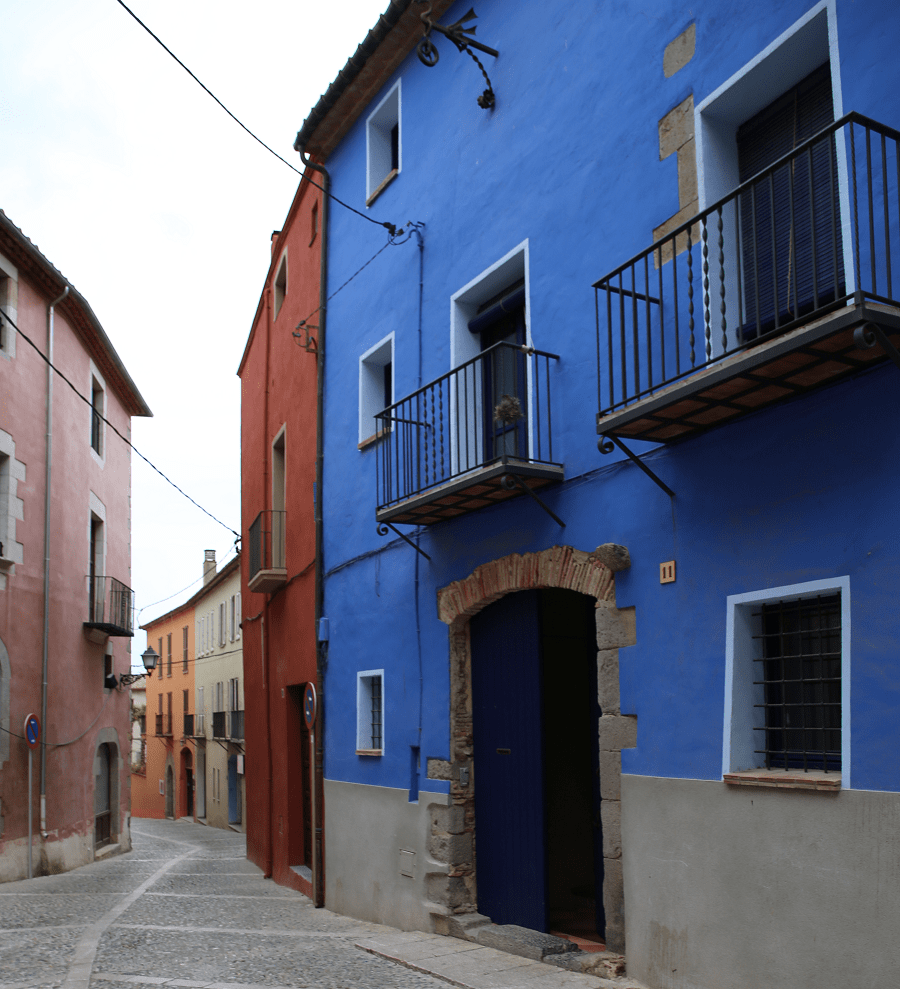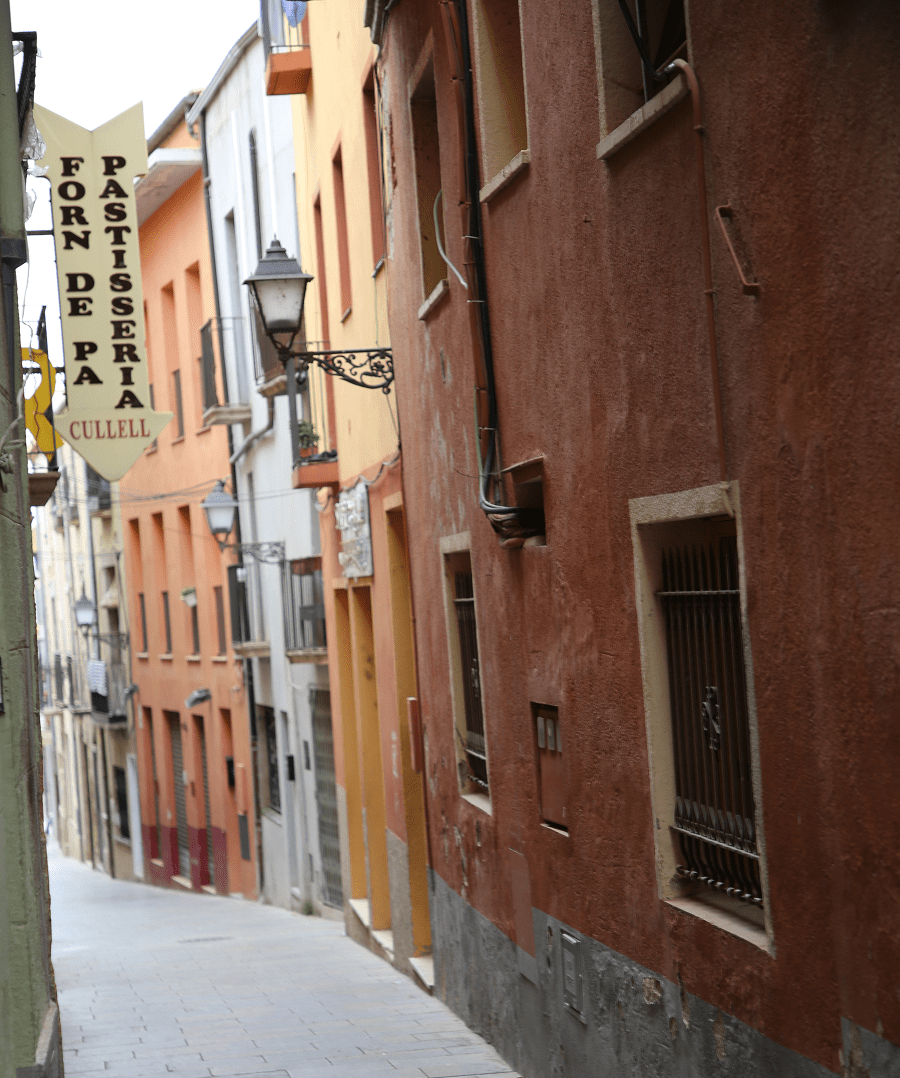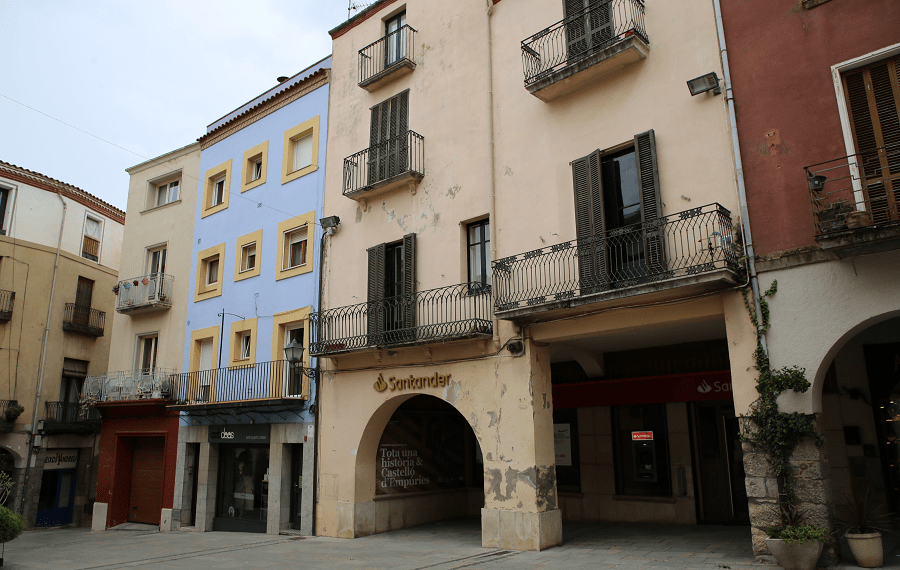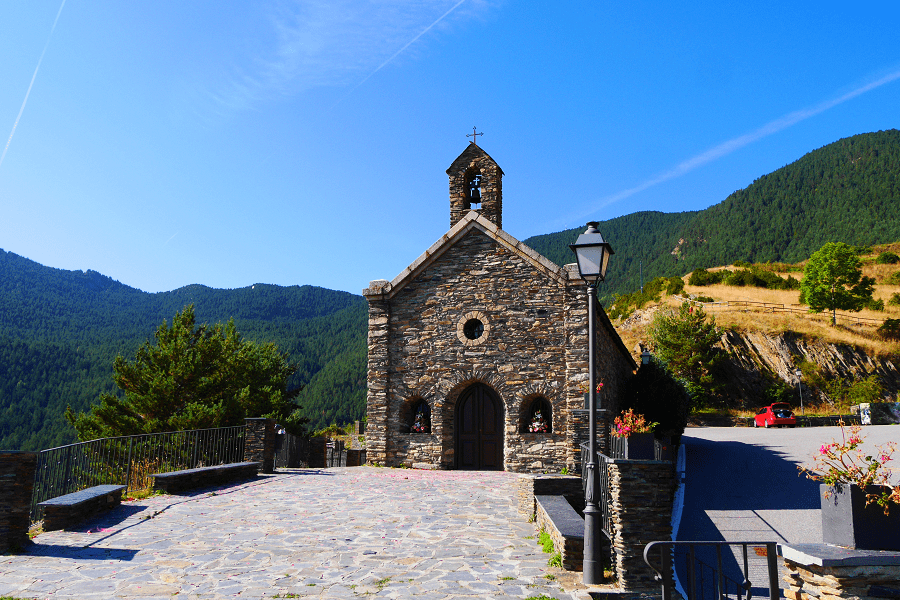Castelló d’Empúries (cat. Castelló d’Empúries) is a city and municipality in Spain, Catalonia, located in the Alt Emporda region. It acquired the status of the capital of the county of Empuries after moving from the neighboring Sant Martí d’Empúries, which is more susceptible to attacks from the sea, and thus became a real medieval capital during the centuries of the greatest political splendor of the Empordà.
The city was one of the very last to join the crown of Aragon, which led to interesting episodes such as the redirection of the river Ter or the unfinished construction of the colorful castle of Montgri, built by the Catalan kings on top of the massif of the same name.
Castelló was an important city. This is probably why residents of other cities in the region said: “Castelló is the main city, all are judges and notaries.”
Its rich medieval past means that every year in mid-September, the Terra de Trobadors festival is held, with troubadour performances, knights fighting, a popular medieval market, musical and theatrical performances and thematic conferences, as well as medieval exhibitions.
Castelló is located on a hill about 17 meters high in the middle of an alluvial plain, on the left bank of the La Muga River and about 4 km from the sea.
The municipality is divided into two parts: the one that was originally the core of the municipality, and about two kilometers in a straight line to the sea, a tourist complex on the coast called Empuriabrava. Empuriabrava has a long beach and is one of the largest residential ports in the world with about 24 km of navigable canals and 5,000 private marinas. In summer, the population increases due to the large influx of tourists, reaching a real population of about 75,000 inhabitants.
In recent years, other urbanizations have emerged, such as Mas Nou, which is on the other side of the Roses road, and separated from Empuriabrava, and Castelló Nou, which, in turn, is separated from the old town.
History
It is believed that on the hills where the city of Castelló was located, there was a “villa” or large farm from the time of the Roman Empire. The historian Jeroni Pujades speaks of the existence of two Roman tombstones, pottery and coins from the same period.
In recent years, prehistoric remains have been discovered near the city center. These are polished stone axes from the Neolithic era.
The medieval city of Castelló had several communities that played a decisive role in the process of transforming the city into the important capital it became. Among them was the Hebrew aljama (Jewish administration), an important Jewish community that stretched across the Empordà, where it established its own laws and customs.
The first documents on the presence of the Jewish community in the Empuries county coincide with the chronology of the city of Girona. In 1321, the Jewish trustees were given permission to expand the synagogue in Castelló. In 1386, when King Pere III (cat. Pere III) acquired the County of Empuries, he included the Jewish community in the royal heritage, confirming the privileges granted by the counts.
Since the mid-fourteenth century, the community has gradually disappeared, despite the efforts of counts and monarchs to protect and revive. Castelló is currently the third site in Catalonia with more tombstones (Hebrew “matzevot”). Already today you can see the structure of the New Synagogue (Bet-Kenneshet).
Main attractions
The old town of Castelló is included in the list of the architectural heritage of Catalonia. The historic city center is located in the heart of the current city, bounded by the location of the streets Portal de la Merce, Muralia, Moore, Cabra, Monturiol and the bed of the Moli irrigation canal. The core was articulated around the Church of Santa Maria and was originally walled. Good evidence of this is the remains of fortifications preserved in the eastern part of the complex, along the bed of the irrigation canal.
The historic city center is a network of narrow streets. The names of streets and squares and their distribution within the city allow us to see the process of formation of the city’s origins. Some examples of this are Plaça de la Llana, de les Cols, del Vi or Les Peixateries Velles, de les Gallines or dels Jueus streets.
In addition to outstanding buildings, many of which are of medieval origin, the houses that make up the network correspond to buildings from the 16th and 17th centuries, with various reforms carried out between the 18th and 19th centuries. These are large rectangular houses with roofs on several sides.
Among the buildings of historical interest: the Basilica of Santa Maria, the Palace of the Counts or the Monastery of San Domenech, Llotja or the communal house, the medieval prison.
The Basilica of Santa Maria (cat. Basílica de Santa Maria), also known as the Cathedral of Empordà or Cathedral of Castelló d’Empúries, is a large Gothic building built between the thirteenth and fifteenth centuries, although parts of the temple are based on a previous Romanesque building, for example, on the bell tower. From the basilica, it is necessary to highlight the Gothic portico, decorated with sculptures of the apostles and the Virgin with a boy and the three wise men. The alabaster altarpiece in the vibrant Renaissance style is considered a unique piece in Catalonia. Vicenç Borràs began construction on the altar in 1485, and there are sculptural scenes from the life of Jesus.
The palace of the counts (cat. El palau dels comtes) was built in 1317, Count Pere II bequeathed the palace to the Dominican monks (1402), at the end of the 17th century the palace was moved and the construction of a new house began. This work began in 1698 but was halted by the War of the Spanish Succession. They were not renewed until the eighteenth century.
Presó medieval – also noteworthy is the medieval prison (fourteenth century), one of the few prison buildings of the old regime that have survived to this day. To the north, it has a voussoir portal and two latticed windows on the façade. The cells are distributed around the central courtyard. Several graffiti, made by prisoners at different times, have survived inside the cells.
The secrets of making flour are revealed in the Ecomuseu-Mill (cat. L’Ecomuseu-Farinera). On three floors of the factory, there are various machines of incredible beauty with a complex production process. Dated to the end of the nineteenth century and the first half of the twentieth. It is a museum belonging to the territorial system of the National Museum of Science and Technology of Catalonia.
The list of museums in the city is complemented by the Parish Museum (cat. Museu Parroquial) and the Museum of Medieval History (cat. Museu d’Història medieval).
As for the centers for the preservation and dissemination of documentary and bibliographic heritage, of interest are the Library of Ramon Bordas (cat. Biblioteca Ramon Bordas i Estragués) and the Municipal Archives of Castelló, the latter of which is located in the old monastery of Sant Domenech, where the headquarters of the organization is currently located.
Restaurants
There are no Michelin-starred restaurants in the city.
How to get there?
The Roses road (C-260) connects it with Figueres (10 km), where the N-II road and the AP-7 motorway pass, as well as the town of Roses (10 km). A regular bus line connects the city with the municipalities of this important axis of the region.
From Girona 50 min (52.4 km) via AP-7
From Barcelona 1 hr 46 min (150 km) via AP-7
From Madrid 7 hr 18 min (751 km) via AP-2 and A-2
Main information
Area: 42.3 sq. km
Coordinates: 42 ° 15 ′ 30 ″ N, 3 ° 04 ′ 29 ″
Population: 11,100
Languages: Spanish, Catalan
Currency: Euro
Visa: Schengen
Time: Central European UTC +1




